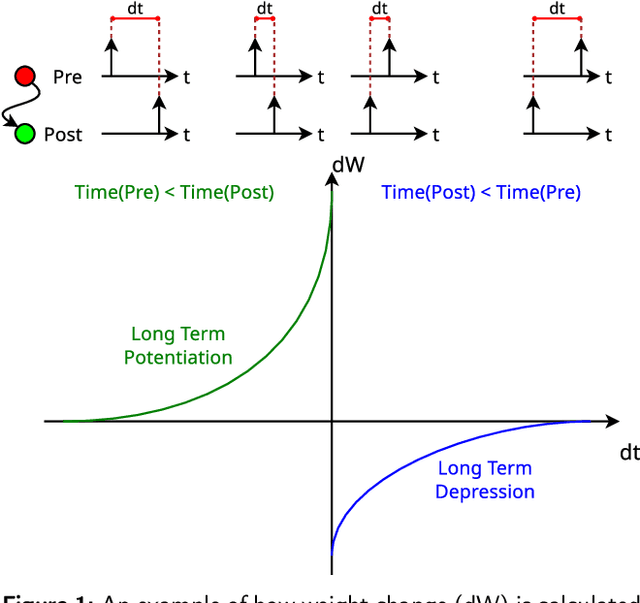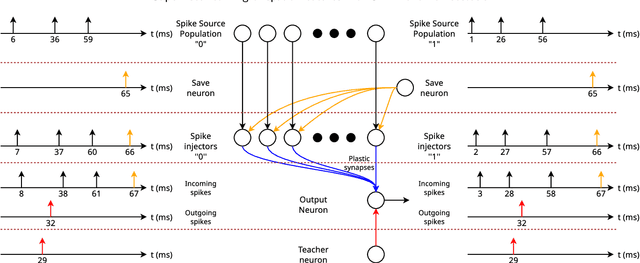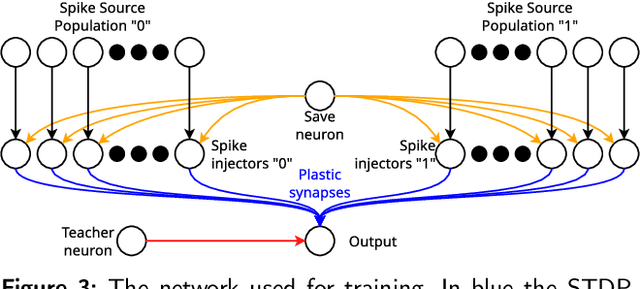Sergio Davies
Supervised learning of spatial features with STDP and homeostasis using Spiking Neural Networks on SpiNNaker
Dec 05, 2023



Abstract:Artificial Neural Networks (ANN) have gained large popularity thanks to their ability to learn using the well-known backpropagation algorithm. On the other hand, Spiking Neural Networks (SNNs), despite having wider abilities than ANNs, have always presented a challenge in the training phase. This paper shows a new method to perform supervised learning on SNNs, using Spike Timing Dependent Plasticity (STDP) and homeostasis, aiming at training the network to identify spatial patterns. The method is tested using the SpiNNaker digital architecture. A SNN is trained to recognise one or multiple patterns and performance metrics are extracted to measure the performance of the network. Some considerations are drawn from the results showing that, in the case of a single trained pattern, the network behaves as the ideal detector, with 100% accuracy in detecting the trained pattern. However, as the number of trained patterns on a single network increases, the accuracy of the identification is linked to the similarities between these patterns. This method of training an SNN to detect spatial patterns may be applied on pattern recognition in static images or traffic analysis in computer networks, where each network packet represents a spatial pattern. It will be stipulated that the homeostatic factor may enable the network to detect patterns with some degree of similarities, rather than only perfectly matching patterns.
 Add to Chrome
Add to Chrome Add to Firefox
Add to Firefox Add to Edge
Add to Edge